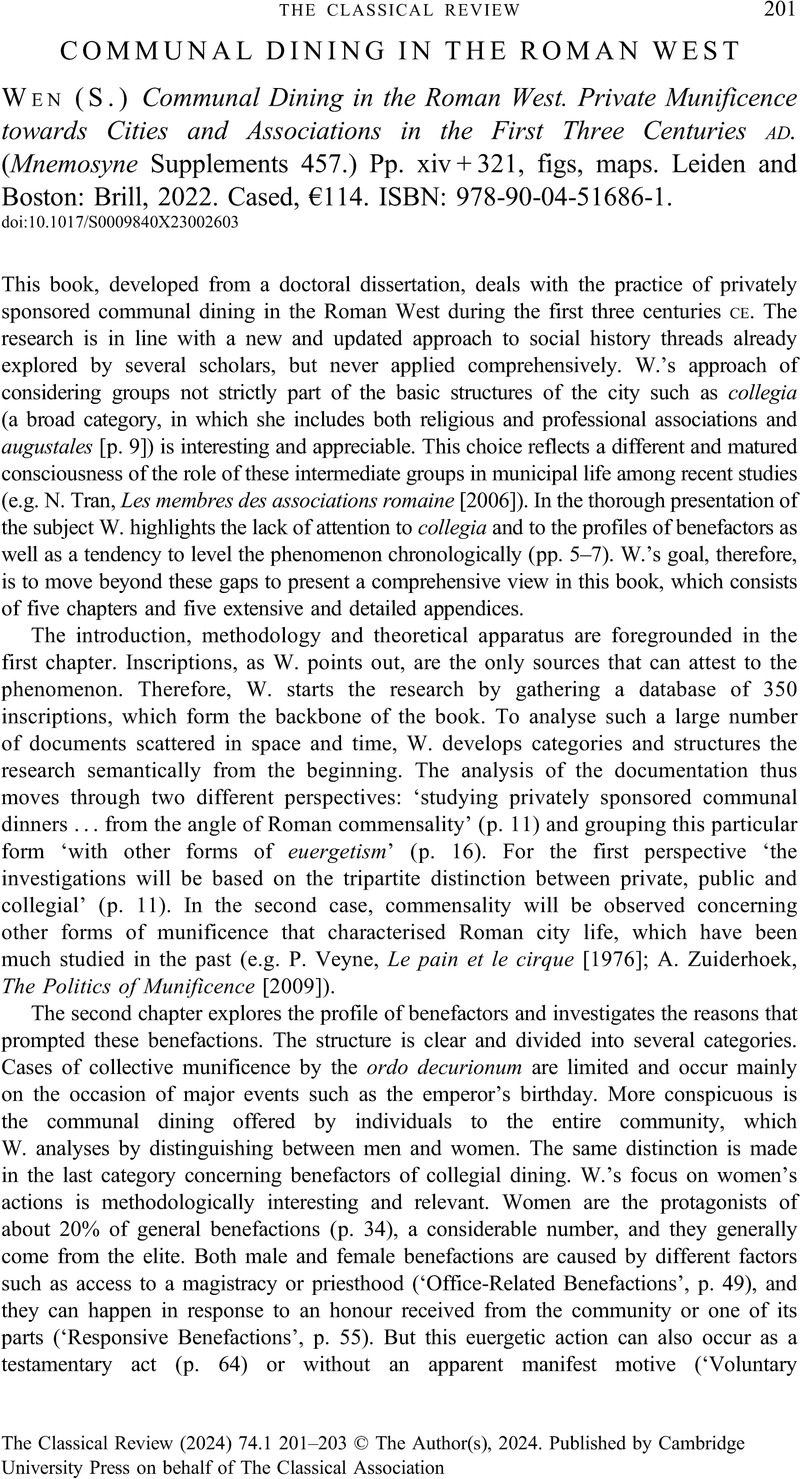No CrossRef data available.
Article contents
COMMUNAL DINING IN THE ROMAN WEST - (S.) Wen Communal Dining in the Roman West. Private Munificence towards Cities and Associations in the First Three Centuries ad. (Mnemosyne Supplements 457.) Pp. xiv + 321, figs, maps. Leiden and Boston: Brill, 2022. Cased, €114. ISBN: 978-90-04-51686-1.
Review products
(S.) Wen Communal Dining in the Roman West. Private Munificence towards Cities and Associations in the First Three Centuries ad. (Mnemosyne Supplements 457.) Pp. xiv + 321, figs, maps. Leiden and Boston: Brill, 2022. Cased, €114. ISBN: 978-90-04-51686-1.
Published online by Cambridge University Press: 12 January 2024
Abstract
An abstract is not available for this content so a preview has been provided. Please use the Get access link above for information on how to access this content.

- Type
- Reviews
- Information
- Copyright
- Copyright © The Author(s), 2024. Published by Cambridge University Press on behalf of The Classical Association



